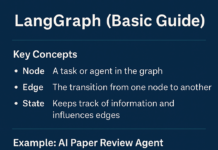In this blog post, I will walk you through the Scinapse, a useful academic search engine for finding research papers.
On the internet, there are a plethora of research papers.
Finding credible and relevant scholarly publications from these dense mounds of academic literature on the internet is a daunting endeavor for a researcher.
In order to solve the issues, the academic search engine plays a pivotal role.
You’ve come to the right site if you’re looking for a useful academic search engine for your research.
In an earlier blog post, I discussed and demonstrated the following best 5 academic search engines for research (multidisciplinary).
- Bielefeld Academic Search Engine (BASE)
- Microsoft Academic
- Google Scholar
- COnnecting REpositories (CORE)
- Semantic Scholar
Scinapse is a free, nonprofit, powerful, emerging academic search engine for discovering research papers.
Pluto Network team, Seoul, South Korea provides the services.
As per their FAQ section, the academic search engine indexes over 200 million articles from over 40,000 journals as of April 2019.
Let us explore the high performing Scinapse academic search engine.
# Major Data Sources of Academic Search Engine for Research
Now, Scinapse uses data from the following four key databases as a source for their search index:
Microsoft Academic Graph (MAG)
Semantic Scholar Open Research Corpus (S2ORC)
Springer Nature SciGraph
PubMed.
Keep in mind that the MAG search engine is no longer accessible after Dec. 31, 2021.
The scholarly search engine is currently powered by a database compiled from four major sources.
As a result, the shape and structure of those original sources have a significant impact on their service.
At present, they are using the Amazon web service cloud platform for their services.
How to Use Services of Academic Search Engine for Research
For accessing the state-of-the-art search engine for searching academic literature, you first navigate to Scinapse.
Once you open the website, the below research-friendly web interface will appear:

Now, you can search scholarly literature using the following items:
- Title
- Author
- Digital Object Identifier (DOI)
- Keyword
In my case, I enter the keyword “Open Educational Resources” for obtaining scholarly resources using the handy search engine.
Here is a snapshot of the academic search engine results page:

You can filter by time, by journal title, topic, etc.
In addition to that, you can see how many times the scholarly article has been cited.
The academic search engine allows you to access the research paper’s site directly from your search results page.
After login, you can save your paper on your research paper as Scinapse provides the Collection feature.
In the Collections, a researcher can sort and search the saved academic papers. In order to discover the results in a particular journal, you can also use a relevant journal page.
Using the “Suggest change” button, research scholars can report incorrect information on Scinapse.
It also shows the H-index metric for authors of the paper as well as journals in their search result page.
Below is the snapshot of filters you can use:

In order to add and store your research article into collection, you create an account. It is a simple process.
You can also sign in using the following accounts:
- ORCID (Open Researcher and Contributor ID)
- Google
The discovery index lets you sort your search results by the following modes:
- Relevance
- Newest
- Most Citations
Furthermore, the researcher can also arrange their search results anytime like this:

With the publication year filter, you can simply analyze the trend of a keyword over time once you search for it.
You can create an alert using the “Create alert” button. The alert will notify you through your e-mail when new scholarly articles are published on your research topic and provide recommendations.
In my previous article, I wrote how to set up search alert in Google Scholar.
A snapshot of creating an alert is given below:

Once you get the search results on your field of study (FOS), you can access the following types citation styles:
- APA
- HARVARD
- MLA
- BIBTEX
- IEEE
- VANCOUVER
- CHICAGO
- ACS
As for example, I select here the APA style through the sub-window. You can copy the reference and include to your academic paper.

Besides, you can also download the reference in RIS and BibTex format.
Based on your activity you can get recommendations from the academic search engine.
The discovery index can identify the corresponding author. Moreover, the Scinapse page suggests that “for papers that need permission to grant access or approval.
At present they focus on developing the paper exploration experience.
At the time of writing this post, they claim users from over 196 countries and 1,130 affiliations use Scinapse .
This research search engine supports modern web browsers like Google Chrome, Apple Safari, Mozilla Firefox, Microsoft Edge.
The Scinapse website is properly designed to comply with all kinds of operating systems.
In Scinapse, researchers can immediately verify not only the author’s affiliation but also the author’s estimated H-index.
Institution Version of Useful Academic Search Engine for Research
In order to establish a scholar-friendly atmosphere where researchers can access scholarly materials quickly, Pluto Network has built the Scinapse university/Institute version.
It also supports semantic and keyword search. Moreover, the academic search engine provides additional licensing resources and support.
In addition to that, it also caters most relevant results based on citation count, journal IF(Impact Factor), conferences tier, authors’ h-index, and published date.
The powerful search engine also provides open access to scholarly literature.
The web app also handles online support and management of user data.
One of the most important features is this academic search engine delivers preprint repositories available within the university.
They provide the following functionalities on a cloud-based platform:

Scinapse for Institution provides the following:
- Journal Subscription Manager
- Journal Marketplace
Using Journal Subscription Manager, you can optimize your scholarly resources for your users.
A snapshot of ” Journal Subscription Manager” with their features is presented below:

They provide a comparison table against EDS(Ebsco), Primo (Proquest) and Summon (Proquest) in their website like this:

It is worth mentioning that duplicate results may occur due to error in metadata aggregation, duplicate subscription, or indexing error.
In this article, I discussed the Scinapse scholarly search engine for academic paper you need to know when starting your research.
The scholarly search engine mentioned above can be of great help to researcher in making their research powerful.
Hopefully, this article was useful to you! If you enjoyed this post, lets others know about the useful academic search engine for research.














